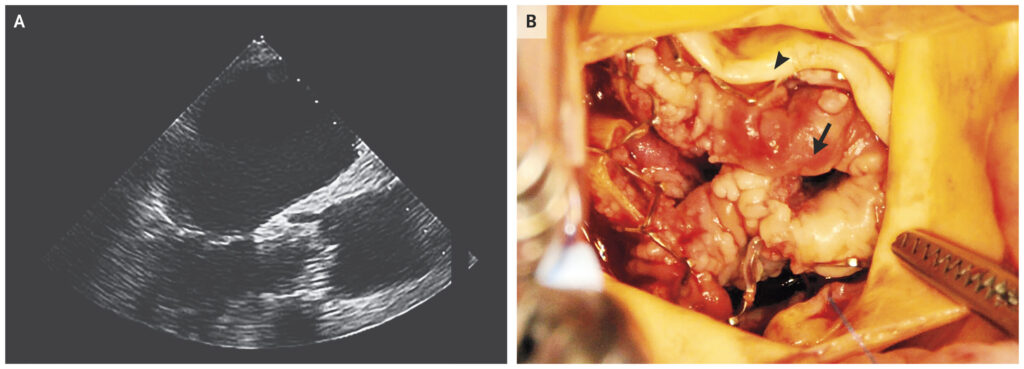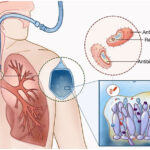Candidal endocarditis is a rare yet serious form of infective endocarditis caused by the Candida species, a type of yeast. Unlike the more commonly known bacterial endocarditis, this fungal infection can present significant challenges due to its infrequency and the specific medical conditions required for its onset. The infection primarily affects the heart valves, causing damage and posing substantial risks, especially if left untreated.

In this comprehensive guide, we will explore the causes, symptoms, diagnosis, treatment, and prevention of candidal endocarditis, offering a thorough understanding of this life-threatening condition.
Understanding the Causes of Candidal Endocarditis
Candidal endocarditis is primarily caused by systemic dissemination of Candida species, which are normally present in the human body, particularly in the gastrointestinal tract, skin, and mucosal membranes. However, under certain conditions, these fungi can enter the bloodstream (a condition known as fungemia) and travel to distant organs, including the heart, where they infect the endocardium and heart valves.
Risk Factors
Several factors increase the risk of developing candidal endocarditis, including:
- Prosthetic Heart Valves: Individuals with artificial heart valves are at a significantly higher risk of fungal infections, as the synthetic materials provide a surface for the fungi to adhere to.
- Intravenous Drug Use: Use of intravenous drugs with non-sterile needles can introduce Candida into the bloodstream, increasing the likelihood of endocardial infection.
- Immunocompromised States: Patients with weakened immune systems, such as those undergoing chemotherapy, organ transplant recipients, or individuals with HIV/AIDS, are more susceptible to candidal infections.
- Indwelling Catheters or Central Lines: Long-term use of central venous catheters increases the risk of infection by facilitating direct entry of Candida species into the bloodstream.
- Prolonged Antibacterial or Antibiotic Therapy: Extensive use of antibiotics can disrupt the balance of microbial flora, promoting the overgrowth of Candida species.
Symptoms of Candidal Endocarditis
The clinical presentation of candidal endocarditis is often subtle and can be mistaken for other conditions. Common symptoms include:
- Fever and Chills: Persistent fever, often accompanied by chills, is one of the hallmark signs of the infection.
- Heart Murmur: An abnormal heart murmur may be detected due to the damage to heart valves.
- Fatigue and Malaise: Generalized fatigue and a feeling of unwellness are common among those affected by candidal endocarditis.
- Embolic Phenomena: Pieces of infected tissue can break off from the heart valve and travel to other parts of the body, potentially leading to embolic events such as stroke, organ infarction, or septic shock.
- Paleness or Skin Lesions: Due to embolization, patients may develop lesions such as Janeway lesions or Osler’s nodes on the skin.
Diagnosing Candidal Endocarditis
The diagnosis of candidal endocarditis is often challenging and requires a multi-step approach. It involves clinical evaluation, laboratory tests, and imaging studies.
Blood Cultures
A key diagnostic tool is the identification of Candida species in blood cultures. However, due to the slow-growing nature of the fungi, blood cultures may take several days to yield results. Additionally, a negative blood culture does not exclude the diagnosis.
Echocardiography
Echocardiography, particularly transesophageal echocardiography (TEE), plays a crucial role in identifying vegetations or abscesses on heart valves. TEE provides a more detailed view of the heart’s structures, improving the detection of fungal infections that may not be apparent on transthoracic echocardiography (TTE).
Polymerase Chain Reaction (PCR)
PCR assays may be used to detect fungal DNA in blood or tissue samples, aiding in the identification of Candida species and confirming the diagnosis.
Histopathological Examination
In some cases, a biopsy of the affected heart tissue may be necessary. Microscopic examination of the tissue reveals the presence of Candida organisms, confirming the diagnosis of candidal endocarditis.
Treatment of Candidal Endocarditis
Treatment of candidal endocarditis is complex and typically requires a combination of antifungal therapy and, in some cases, surgical intervention.
Antifungal Therapy
The cornerstone of treatment is the use of systemic antifungal medications, which may include:
- Echinocandins (e.g., caspofungin, micafungin): These drugs are effective against a broad range of Candida species and are often the first-line treatment for candidal endocarditis.
- Fluconazole or Amphotericin B: If the patient is resistant to echinocandins, fluconazole or amphotericin B may be considered as alternatives.
The duration of antifungal therapy typically ranges from 4 to 6 weeks, depending on the severity of the infection and the patient’s response to treatment.
Surgical Intervention
In severe cases, surgical intervention may be necessary to remove infected heart valves, repair damaged tissues, or drain abscesses. Valve replacement surgery may also be required for patients with extensive valve damage.
Preventing Candidal Endocarditis
Its a involves minimizing risk factors and ensuring early detection and treatment of Candida infections. Key preventive measures include:
- Proper Sterilization Practices: For individuals with central venous catheters, proper hygiene and sterilization techniques are critical to reduce the risk of fungal infections.
- Prophylactic Antifungal Therapy: In high-risk patients, prophylactic antifungal treatment may be considered to prevent the onset of candidal endocarditis.
- Monitoring for Fungal Infections: Patients undergoing invasive medical procedures or those with known risk factors should be monitored for signs of systemic fungal infections.
Prognosis and Outcome
The prognosis of candidal endocarditis largely depends on the timeliness of diagnosis and treatment. Early identification and appropriate antifungal therapy significantly improve the chances of survival. However, candidal endocarditis remains a life-threatening condition with a high mortality rate, especially in immunocompromised individuals or those with prosthetic heart valves.
Complications
Untreated candidal endocarditis can lead to severe complications, such as heart failure, systemic embolism, or organ damage. The infection may also lead to the development of chronic heart valve dysfunction, requiring long-term follow-up care.

